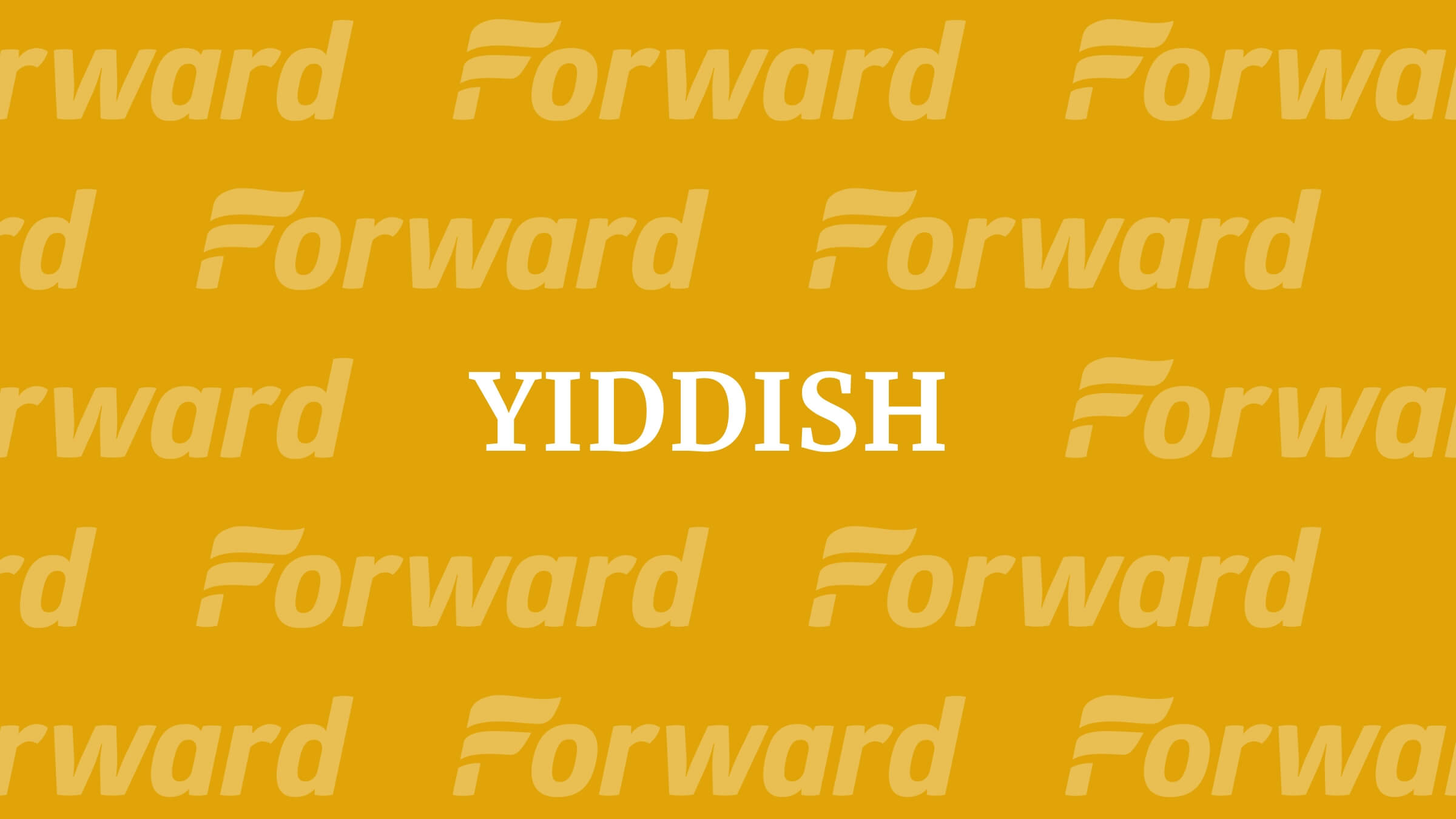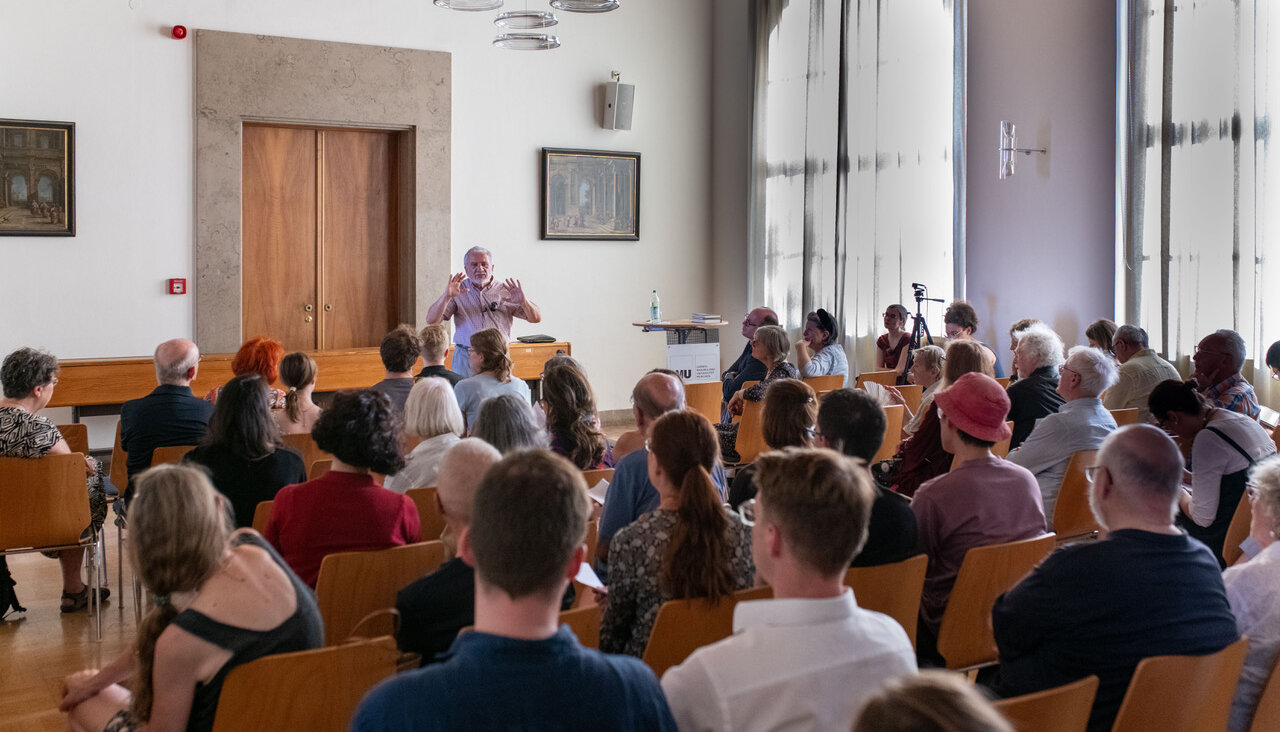נײַ צוויישפּראַכיק קינדערביכל, „שלמהל-בױמל מיטן מזלדיקן דרײדל‟New bilingual children’s book, ‘Shloyml Boyml and the Lucky Dreidel’
יעל סטראָמס ביכל קען דינען ווי אַ משל, ווי אַזוי מע קען לעבן מיט עמעצן וואָס איז נישט אַזוי אײַנגענעם.

Graphic by Angelie Zaslavsky
מער װי 100 יאָר צוריק, האָט דער ייִדישער שרײַבער ב. קאָװנער (פֿון דער היים — יעקבֿ אַדלער), נאָכן באַזעצן זיך אין ניו־יאָרק, געשאַפֿן אַ סטיל שרײַבן, אַ סוב-זשאַנער פֿון ייִדישן הומאָר, וואָס האָט זיך מיט דער צײַט פֿאַרשפּרייט אין דער אַמעריקאַנער ייִדישער קולטור בכלל: מעשׂיות מיט טשיקאַווע פּערסאָנאַזשן ווי יענטע טעלעבענדע, משה קאַפּױער און קלמן זלמן דער אַלמן.
איצט האָט דער כּלי־זמר יעל יצחק סטראָם אַרויסגעלאָזט אַ קינדערביכל מיט אַ נײַעם פּערסאָנאַזש: שלמהל-בױמל, וואָס מע קען לייענען סײַ אױף ייִדיש סײַ אויף ענגליש. דאָס בוך איז אַ קאָלאַבאָראַציע צווישן סטראָם, וועלכער האָט געשריבן דעם טעקסט אויף ענגליש, און ניקאָלײַ אָלניאַנסקי וואָס האָט עס איבערגעזעצט אויף ייִדיש.
די אילוסטראַציעס זענען פֿון עמיל זינגער-פֿױער, אַן אָפּשטאַמיקער פֿון בודאַפּעשט, אונגערן, װאָס װױנט הײַנט אין מאַנטשעסטער, ענגלאַנד. סטראָם װױנט אין קאַליפֿאָרניע און אָלניאַנסקי — אין שוועדן.
יאָ, ס׳איז אַ חנוכּה מעשׂה – אָבער ס׳איז מיר פּונקט אַזױ שטאַרק געפֿעלן געוואָרן ווי סתּם אַ קינדער־מעשׂה. פֿון אײן זײַט, איז זי אַן אַלעגאָריע פֿון דער חנוכּה־געשיכטע. פֿון דער צווייטער זײַט, דינט זי ווי אַ משל, ווי אַזוי מע קען לעבן מיט עמעצן וואָס איז נישט אַזוי אײַנגענעם. די בילדער שילדערן שיין אָפּ דאָס אַמאָליקע ייִדישע לעבן אין דער אָדעסער געגנט – אמתע ערטער און אויך באַאַרבעטונגען פֿון לאָקאַלע לעגענדעס.
ב. קאָװנערס באַרימטסטער פּערסאָנאַזש, יענטע טעלעבענדע, איז באַקאַנט פֿאַר זײַן אַ קאָכלעפֿל, איינע וואָס מישט זיך כּסדר אַרײַן אין אַנדערע מענטשן ענינים. דערפֿון איז טאַקע אַרויסגעוואַקסטן דער צונאָמען ׳יענטע׳ פֿאַר אַ פֿרוי וואָס „מישט זיך‟ צו פֿיל. אפֿשר וועט דער נײַער העלד, שלמהל-בױמל, אויך מיט דער צײַט ווערן אַ באַקאַנטער העלד בײַ ייִדן!
כּדי צו באַשטעלן דאָס בוך גיט אַ קוועטש דאָ
/























